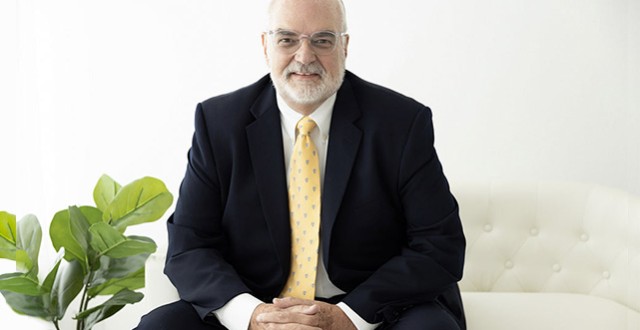
- Mediation
- Arbitration
- Court Neutrals
- Online Dispute Resolution
- Technology
- Court Decisions
- More
- Legislation
- Healthcare
- Guest Posts
- John DeGroote
- John C. Fleming
- Rick Freeman
- Professor Peter Friedman
- Honorable W. Royal Furgeson, Jr.
- James M. Gaitis
- Laura A. Kaster
- Professor John Lande
- Philip J. Loree, Jr.
- Michael McIlwrath
- F. Peter Phillips
- Professor Alan Scott Rau
- Professor Thomas J. Stipanowich
- Professor S.I. Strong
- Richard Webb
- Glen M. Wilkerson
- International arbitration
- Regulation
- Sports and Entertainment
- We’re Back!!!!Well, it’s been a while since we published and that is about to change. Since I spent much of last year becoming
 JAMS Welcomes Karl Bayer to its Panel of NeutralsJAMS, the world’s largest private alternative dispute resolution (ADR) provider, is pleased to announce that Karl Bayer
JAMS Welcomes Karl Bayer to its Panel of NeutralsJAMS, the world’s largest private alternative dispute resolution (ADR) provider, is pleased to announce that Karl Bayer Class Action Waivers in Arbitration Agreements: The Twenty-First Century Arbitration Battleground and Implications for the EU CountriesLinda S. Mullenix, Morris & Rita Atlas Chair in Advocacy at the University of Texas School of Law, has written “Class Ac
Class Action Waivers in Arbitration Agreements: The Twenty-First Century Arbitration Battleground and Implications for the EU CountriesLinda S. Mullenix, Morris & Rita Atlas Chair in Advocacy at the University of Texas School of Law, has written “Class Ac Picking the Proper Technological Tool for Problem-Solving in ArbitrationProfessor Amy J. Schmitz, John Deaver Drinko-Baker & Hostetler Chair in Law and Co-Director of the Translational Data An
Picking the Proper Technological Tool for Problem-Solving in ArbitrationProfessor Amy J. Schmitz, John Deaver Drinko-Baker & Hostetler Chair in Law and Co-Director of the Translational Data An
Recent Posts
Fifth Circuit Overturns Arbitration Order Where Employer Failed to Countersign Agreement
The United States Court of Appeals for the Fifth Circuit has reversed a Texas federal court’s order compelling arbitration in a sexual harassment and discrimination case because one party failed to sign an agreement to arbitrate.
Continue reading...English Justice for an American Company?
Christopher C. French, Professor of Practice at Penn State Law, has published “English Justice for an American Company?,” 97 Tex. L. Rev. Online __ (2018).
Continue reading...SCOTUS to Consider Delegation of “Wholly Groundless” Arbitrability Claims
The Supreme Court of the United States has granted certiorari in another arbitration case.
Continue reading...SCOTX Reverses Order Denying Jefferson County Constable’s Arbitration Request
The Supreme Court of Texas has reversed an appellate court’s order based on a related case that was decided by the state’s highest court in April.
Continue reading...Arbitration
Imre S. Szalai, Judge John D. Wessel Distinguished Professor in Social Justice at Loyola University New Orleans College of Law, has published “A New Legal Framework for Employee and Consumer Arbitration Agreements,” 19 Cardozo J. Conflict Resol. 653 (2018); Loyola University New Orleans College of Law Research Paper No. 2018-09.
Continue reading...Mediation
Liability insurance policies often contain alternative dispute resolution clauses, including: (1) Binding arbitration only; (2) Mediation and, if mediation is unsuccessful, then binding arbitration; (3) Election between mediation and arbitration, with insured having veto power over the insurer’s selection; and (4) Mediation or binding arbitration with a waiting period before suit is filed if mediation is selected. See Ernest Martin, Jr, Hot Tips on Managing the Liability Crisis Through Insurance, Haynes and Boone, LLP (June 24, 2004). The Stowers Doctrine In Texas, the landmark decision recognizing an insurer’s duty to settle a third-party liability claim is G.A. Stowers Furniture Co. v. American Indemnity Co. See 15 S.W.2d 544, 544-46 (Comm’n App. 1929, holding approved). In Stowers, the court held that when a primary liability insurance carrier defends an insured person against a covered claim made by a third party, the primary insurer has a common law duty to exercise reasonable care in responding to a settlement demand that is within the policy’s limits. Thus, if an insurance company that is given the opportunity to settle within its policy limits fails to do so, it could potentially become responsible not only for any excess judgment, but also liable to their own insured for breach of the duty of good faith and fair dealing, D.T.P.A., claims under the Texas Insurance Code another claims. This duty of reasonable care is known as the Stowers Doctrine. The Elements of Stowers The Texas Supreme Court further clarified the Stowers duty in American Physicians Insurance Exchange v. Garcia. See American Physicians Ins. Exchange v. Garcia, 876 S.W.2d 842 (Tex. 1994). In Garcia, the court went on to explained that the Stowers doctrine is activated when a third party seeking to impose liability on an insured makes a demand to settle the claims and the following circumstances exists: The claim against the insured is within the scope of the policy’s coverage; The settlement demand is within policy limits or a stated sum of money within the policy’s limits; The proposed settlement is one that will result in a full release of the insured; and The terms of the settlement demand are such that an ordinarily prudent insurer would accept it, considering the likelihood and degree of the insured’s potential exposure to an excess judgment. Stowers: Recent Cases Two recent Texas cases reinforce the use of the Stowers doctrine as a prevalent practice. After a 2001 automobile accident with Francisco Rangel, Edward McDonald was admitted to Memorial Hermann Hospital, and the hospital filed a “Notice of Hospital Lien” saying, “The name of the person alleged to be liable for damages arising from the injury is any and all responsible parties. The lien is for the amount of the hospital charges for services provided to the injured individual during the first 100 days of the injured individual’s hospitalization.” McDonald v. Home State County Mut. Ins. Co., 01-09-00838-CV, 2011 WL 1103116 (Tex. App. — Hous. [1st Dist.] Mar. 24, 2011, no pet.). McDonald’s lawyer sent Rangel’s insurance company a notice wherein it was explicitly stated that this was to be a Stowers offer. As the deadline in the notice passed, McDonald’s lawyer let Rangel’s insurance company know that he felt the Stowers duty had thereby been breached and settlement efforts had terminated. The case went to trial, where both parties filed motions for summary judgment. The court of appeals found the “settlement demand insufficient to trigger a Stowers duty because it did not include a release of the lien, and, therefore, an ordinarily prudent insurer would not accept the settlement demand. Specifically, the court found that the demand did not explicitly offer any release of potential claims against Rangel.” See Lee H. Shidlofsky, Insurance Law Newsletter. Vol. 5 Issue 1. May 27, 2011, at 2 “[T]he court rejected McDonald’s contention that the Insurer impliedly accepted a Stowers duty here by not discussing the lien’s release with McDonald in its settlement discussions. Instead, the court reasoned that the Insurer still could have required the release as part of any later formal settlement.” A different court recently answered “the question as to how to Stowerize an excess carrier—although doing so requires the assistance of the primary carrier in the first instance.” After a truck collision on Highway 287, defendants filed suit against the other driver as well as the truck company of the other driver, alleging vicarious liability. See Pride Transp. v. Cont’l Cas. Co., 2011 WL 1197306 (N.D. Tex. Mar. 31, 2011). The defendants made a settlement offer to the other driver with no mention of releasing claims against the company, and later, the insurance companies involved moved for summary judgment arguing a Stowers duty to accept the settlement that had not been accepted. After outlining the Stowers doctrine, the court “found that an insurer may enter into a reasonable settlement with one of several claimants even though it would exhaust or diminish the money available to satisfy the other claims.” Also, “a valid Stowers demand mandates that an insurer settle on behalf of a single insured even if it exhausts the policy limits and thereby exposing the remaining insureds, so this result prevents an insurer from settling on behalf of one insured and having to choose between continuing to defend a non-settling insured beyond policy limits or facing liability for treating the nonsettling insureds unequally.” Implications of Stowers on Mediation The Stowers doctrine intersects with mediation law in several issues. First, if there is not a judgment, there cannot be a Stowers cause of action. Because a “Stowers cause of action does not accrue until the judgment in the underlying case becomes final.” Therefore, there cannot be a Stowers cause of action if the case is settled in mediation before a Stowers demand is made. Another issue is the effect of a Stowers demand at the time of the mediation. Since any settlement which does not exceed the policy limits would automatically bar any future contractual claim, as a prerequisite is a judgment in excess of the policy limits, settlement […]
Continue reading...Healthcare Disputes
Study Captures Nurses’ Experiences with Disruptive Behavior
By Holly Hayes The Journal of Nursing Care Quality published this month the results of a qualitative study titled “Hospital RNs’ Experiences with Disruptive Behavior”. The study describes the different types of disruptive behavior the study group of registered nurses had experienced on the front lines of patient care, identifies the triggers of this behavior, learns how nurses respond to disruptive behavior and identifies the impact of this behavior on the individual and the organization. Data was gathered through focus groups conducted with registered nurses (RNs). You may purchase the article here. Types of Disruptive Behavior Three themes of disruptive behavior emerged: incivility (described as rude or disrespectful behavior), psychological aggression (for example: intimidation, professional disregard or verbal aggression) and physical violence. Triggers of Disruptive Behavior Nurses were asked to identify the triggers of disruptive behavior and three themes emerged: intrapersonal triggers (occurring within the individual — for example, lack of competency or fatigue), interpersonal triggers (occurring between two people — for example, the use of status to control others or communication issues resulting in a lack of information to care for a patient), and organizational triggers (systems, processes or culture of an organization — for example, high census or patient flow issues). Intrapersonal triggers were reported as the main reason for disruptive behavior. For these triggers, corrective action for the disruptive behavior often lies within the individual and requires a recognition of how the individual’s internal state contributes to the disruptive behavior. The low frequency of interpersonal triggers was an unexpected finding considering the importance of communication and teamwork in the delivery of patient care. Response to Disruptive Behavior Study participants identified three categories where they addressed disruptive behavior in a positive way: address the conflict constructively, analyze the situation and seek support for the behavior. Nurses on one patient care unit developed a constructive strategy by creating a penalty flag that team members could use when disruptive behavior was occurring to call a time out. This was described as empowering the staff to develop norms for acceptable behavior. Another study participant described how she steps back from the conflict and analyzes the event to help develop personal strategies for addressing these behaviors in the future. Nurses also described asking for support from peers, managers, staff assistance programs, or security or by using the organizational chain of command to deal with disruptive behavior. Impact of Disruptive Behavior “Disruptive behavior affects the RN, patient, and practice setting. The nurses described impacts such as being distracted from patient care, taking a physical or emotional toll on them personally, and creating conflicts for them between meeting patient care needs and meeting the operational needs of the hospital. They also expressed concerns that disruptive behavior can decrease the quality of care, create risks to patient safety, delay the delivery of care to patients, and disrupt working relationships among team members.” Nurses also discussed the impact of disruptive behavior on retention. Forty-eight percent of participants said they knew a nurse who transferred to another unit or department because of disruptive behavior and thirty-four percent said they knew nurses who had terminated their employment because of disruptive behavior. Next Steps The authors of the study, Jo M. Walrath, PhD, RN; Deborah Dang, PhD, RN, NEA-BC; and Dorothy Nyberg, MS, RN are developing a survey instrument to be “used to conduct a systematic organizational assessment to establish the prevalence of disruptive behavior in the organization and the triggers, responses, and impacts of this behavior on RNs. Findings from this organizational assessment will ultimately determine the nature and type of interventions that will be designed, implemented, and evaluated to effectively manage this phenomenon.” For more on disruptive behavior in health care, read our previous post here. Reference: Jo M. Walrath, PhD, RN; Deborah Dang, PhD, RN, NEA-BC;Dorothy Nyberg, MS, RN. Hospital RNs’ Experiences With Disruptive Behavior A Qualitative Study. J Nurs Care Qual. Vol. 25, No. 2, pp. 105–116. Holly Hayes is a mediator at Karl Bayer, Dispute Resolution Expert where she focuses on mediation of health care disputes. Holly holds a B.A. from Southern Methodist University and a Masters in Health Administration from Duke University. She can be reached at: holly@karlbayer.com.
Continue reading...In Health Reform, the Power of a Positive No
By Holly Hayes Those of us in the mediation field have likely read The Power of a Positive No by William Ury. I was reminded of this book when I read the New York Times article this week, “In Medicine, the Power of No.” See the full article here. William Ury’s preface begins with a discussion of his daughter’s illness and his family’s “long journey through the medical system.” He says, “I realize the process has called on all of the skills I have learned over the years in helping others get to Yes with their negotiation issues. I also realized that, for me personally, the key skill I needed to develop to protect my daughter and our family was saying No.” Everyone says no, the difference for Ury was that “my Nos needed to be nice.” As you might have guessed, David Leonhardt in the New York Times asks, “How can we learn to say no?” The article outlines a three-step process about learning to say no in medicine, more often: The first is learning more about when treatments work and when they don’t. ‘All too often,’ the Institute of Medicine reports, the data is ‘incomplete or unavailable.’ As a result, more than half of treatments lack clear evidence of effectiveness, the institute found. It says the most promising areas for research include prostate cancer, inflammatory diseases, back pain, hyperactivity, and CT scans vs. M.R.I.’s for cancer diagnosis. As part of the health act, a Patient Centered Health Research group will have an annual budget of $600 million. Relative to total health spending, that’s a paltry sum. But it’s real money relative to what’s now being spent on such research. The second step — and maybe the most underappreciated one — is to give patients the available facts about treatments. Amazingly, this often does not happen. ‘People are pretty woefully undereducated about fateful medical decisions,’ says Dr. Michael Barry of the Massachusetts General Hospital, an advocate for sharing more with patients. When patients are given information about potential benefits and risks, they seem to choose less invasive care, on average, than doctors do, according to early studies. Some of them choose home care like https://homecareassistance.com/la-jolla/. Some people, of course, decide that aggressive care is right for them — like the cancer patient (and palliative care doctor) profiled in this newspaper a few days ago. They are willing to accept the risks and side effects that come with treatment. Many people, however, go the other way once they understand the trade-offs. The health act requires Medicare and other agencies to help hospitals and doctors give patients more information — which is practically a no-lose proposition. In the course of receiving more control and more choice, two distinctly American values, patients will probably help hold down costs. The final step is the bluntest. It involves changing the economics of medicine, to reward better care rather than simply more care. Health reform doesn’t go nearly far enough on this score, but it is a start. The tax subsidies for health insurance will shrink, which should help people realize medical care is not free. And doctors who provide good, less expensive care won’t be financially punished as often as they now are. None of these steps will allow us to avoid the wrenching debates that are an inevitable part of health policy. Eventually, we may well have to decide against paying for expensive treatments with only modest benefits. But given how difficult that would be for this country, it makes sense to start with the easier situations — the ones in which ‘no’ really is the best answer for patients. Space will only allow a summary of William Ury’s wise words on this topic. He outlines, “The Three Great Gifts of a Positive No”: According to the sages of ancient India, there are three fundamental processes at work in the universe: creation, preservation, and transformation. Saying No is essential to all three processes. If you can learn to say No skillfully and wisely, you can create what you want, protect what you value, and change what doesn’t work. These are the three great gifts of a Positive No. We welcome your comments on this topic. Holly Hayes is a mediator at Karl Bayer, Dispute Resolution Expert where she focuses on mediation of health care disputes. Holly holds a B.A. from Southern Methodist University and a Masters in Health Administration from Duke University. She can be reached at: holly@karlbayer.com.
Continue reading...Legal Research
About Disputing
Disputing is published by Karl Bayer, a dispute resolution expert based in Austin, Texas. Articles published on Disputing aim to provide original insight and commentary around issues related to arbitration, mediation and the alternative dispute resolution industry.
To learn more about Karl and his team, or to schedule a mediation or arbitration with Karl’s live scheduling calendar, visit www.karlbayer.com.













